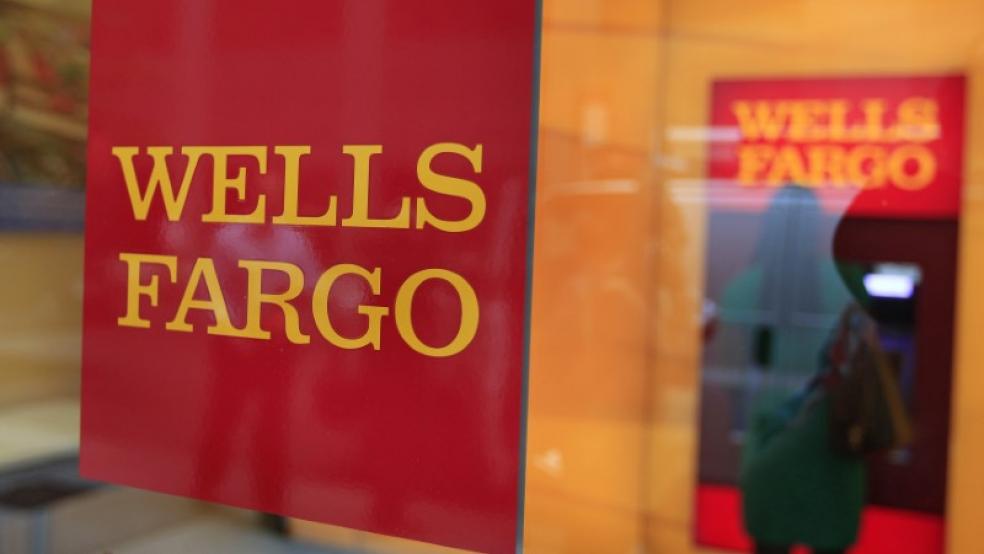Wells Fargo has habitually tried to cultivate a reputation as “the good bank.” Its executives maintain with pride that they stay away from high-risk investment products, and focus on traditional banking, with the highest ethical standards.
Except for the part where bank employees created over 2 million fake accounts in their customers’ names.
The Consumer Financial Protection Bureau (CFPB), Office of the Comptroller of the Currency and the Los Angeles City Attorney fined Wells Fargo $185 million last week for generating fictitious accounts over a five-year period. Employees forged signatures, conjured phony email addresses and shifted funds between real and phony accounts, sometimes generating unwarranted fees for customers.
Related: US Banks Just Set a Record for Profits
Now, it may sound strange to say that this was not, at the root, a consumer fraud case. But it really wasn’t. This was more of a securities fraud gambit, combined with wage theft, and that explains why the lack of accountability at the top in this matter is so galling.
What drove this scheme? The whole story could be found in the pages of the Los Angeles Times nearly three years ago (they gift-wrapped this investigation, first for the City Attorney and then for the federal regulators who piled on). Wells Fargo regional managers gave their branch offices daily quotas to “cross-sell” financial products to existing customers. If someone had a checking account, you sign them up for a savings account. Or a credit or debit card. Or online banking services.
Former CEO Dick Kovacevich actually invented a target for each customer called the “Gr-eight initiative” — eight add-on products per household. This is the equivalent of a used car salesman up-selling the undercoating. (Hilariously, Kovacevich is now on the board of another fraudulent company, Theranos.)
Related: Wells Fargo Told Staff to Keep Quiet About Missing Papers — Lawsuit
Employees who missed sales quotas would have to work weekends or stay late to catch up. They were also threatened with firing. To handle the pressure, some employees opened accounts or ordered credit cards without customer permission. Wells Fargo says 5,300 workers have been fired for such conduct over the past five years.
The goal of this enterprise was not really to make money through fees on the add-on products. CFPB’s complaint states that only 85,000 of the 1.5 million fake accounts incurred fees (of about $2 million), and just 14,000 of the half-million unauthorized credit cards incurred fees (of about $400,000). And $2.4 million doesn’t move the needle at a bank with $5.6 billion in quarterly profits. Consumers who have to deal with the aftermath — hits to their credit score, the mandatory arbitration they’re locked into on accounts they never asked for — suffered additional harm. But that was a by-product of Wells’ larger scheme.
Related: Banks Got Bailed Out — and the Feds Made a Killing
The idea here was to show steady quarterly growth to investors. The daily sales quotas weren’t plucked from the sky, but designed to maintain industry leadership in cross-selling. Wells constantly brags in its earnings statements about this. “Cross-sell is the result of serving our customers well, understanding their financial needs and goals over their lifetimes, and ensuring we innovate our products, services and channels so that we earn more of their business and help them succeed financially,” reads the 2015 annual report. The bank tracks cross-selling metrics; the average Wells Fargo retail banking customer had 6.11 products at the end of 2015.
Multiple accounts signal to Wall Street that Wells maintains deep relationships with its customers, meaning that the bank will keep making money off them. Growth in cross-selling plus growth in the customer base equals growth in earnings, investors assume. Wells Fargo stock doubled from 2011 to mid-August 2015, the period described in the fraud complaint.
Now keep in mind that John Stumpf, the CEO of Wells, took $155 million in stock options between 2012 and 2015, as the share price soared, in part based on the successful cross-selling strategy. And, as Fortune reported yesterday, the executive who oversaw the banking unit the entire time those millions of fake accounts were opened is “retiring” with a $124.6 million golden parachute. So the fake accounts goosed the stock price, directly benefiting executives. That’s securities fraud. Wells Fargo knew that the cross-selling metrics, which it put in its annual reports, were bogus; it didn’t fire all 5,300 employees last week, but over a five-year period. Yet the bank continued to promote those numbers to investors without informing them of the fake account generation.
Related: How the Government Is Rolling Over for Big Banks Again
There’s a wage theft element to this as well. For some reason news reports keep claiming that employees ginned up fake accounts to acquire bonuses. If these sales targets were mandatory, they weren’t bonuses at all but part of their salary. And the low-paid, non-union branch workers simply had to comply or lose their jobs. “The sales pressure from management was unbearable,” one former employee told CNNMoney.
Employees who missed targets would stay late, work weekends and take extra time to make it up. Workers were told to reach goals “or else you’re not going home.” Even regional managers would stay late to achieve the sales quotas. These efforts were all unpaid. In fact, there are several class-action lawsuits on behalf of Wells Fargo workers alleging unpaid overtime, failure to provide meal or rest periods, wrongful termination and emotional distress. One major case has been moved to state court in California and could go to trial next year.
Unfortunately, those workers will not be helped by the federal enforcement action. Wells Fargo did not have to admit wrongdoing, and parts of the settlement would be inadmissible in court. Moreover, the wrong agency handled this case. CFPB can only deal with consumer fraud. Where is the Securities and Exchange Commission, or the Labor Department? Or the Justice Department, which should be receiving a criminal referral in this case?
This was a scheme to raise the stock price, and to profit off the unpaid labor of branch office workers. Those are federal crimes. But the scandal won’t hurt the bank or its executives at all, according to financial analysts. The $185 million in fines Wells has to pay represents about three days of the bank’s profit, and it doesn’t come close to matching the cost of stock inflation and labor law violations.
Related: Fearing Lawsuits, US Banks Set Sky-high Limits for Director Pay
Why aren’t the individuals who benefited from this scheme being brought to justice? It’s quite clear that the corporate culture of high sales quotas drove workers to cheat; in fact, regional managers encouraged it. Either executives knew exactly what they were doing, or they lost control of their subordinates, a violation of Sarbanes-Oxley certifications that chief executives make (under penalty of law) that they have adequate operational control. Regardless, they are culpable in this case, and they profited handsomely through a bloated stock price.
It’s not nearly good enough to allow Wells Fargo to conduct a years-long securities fraud scheme and have all their high-level executives get away with it. The timidity and excuse-making — that such cases are simply too hard to make — underlines how modern law enforcement destroys accountability before even trying. Nothing can better explain the anger and frustration Americans feel about a rigged system.






